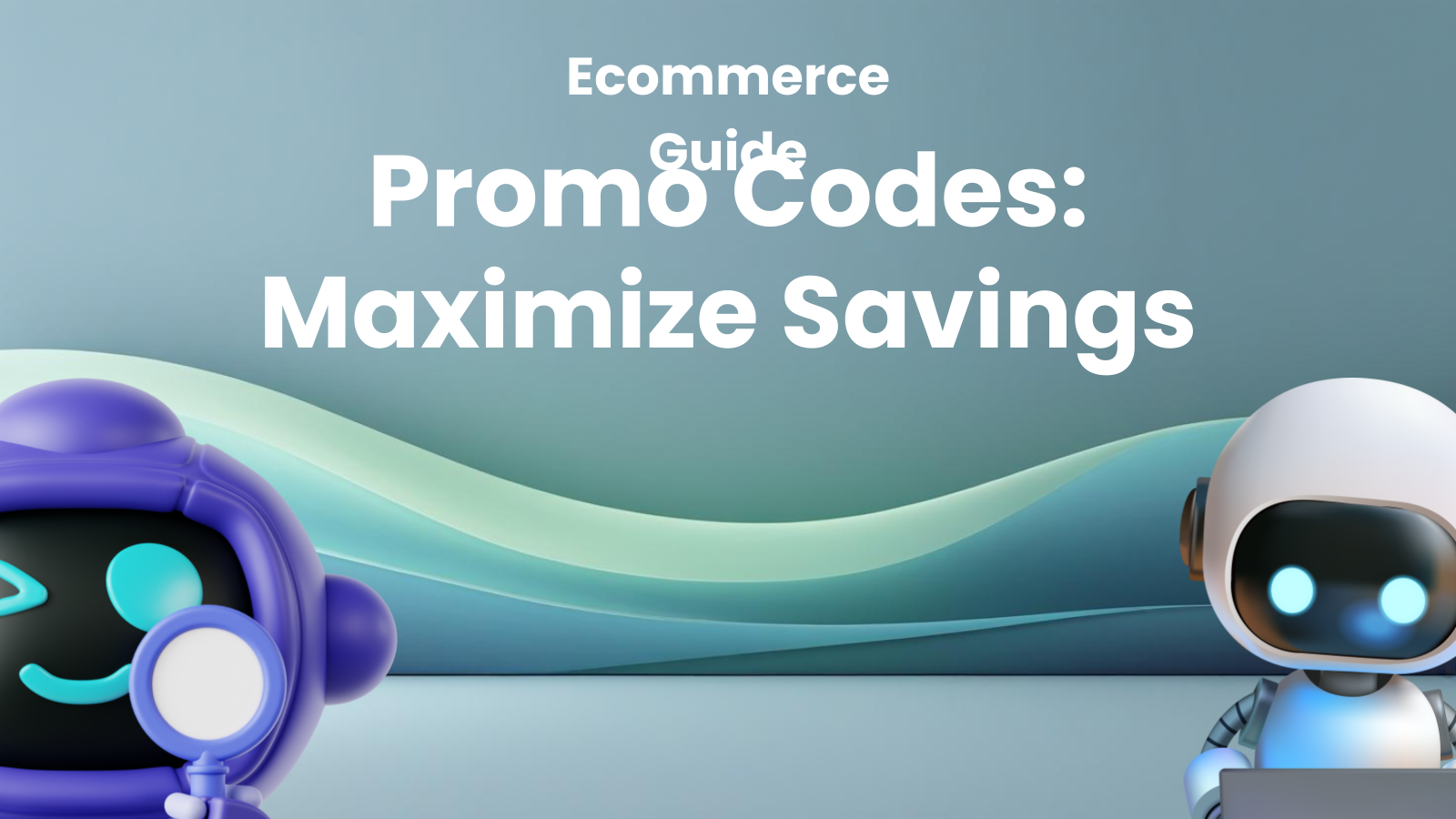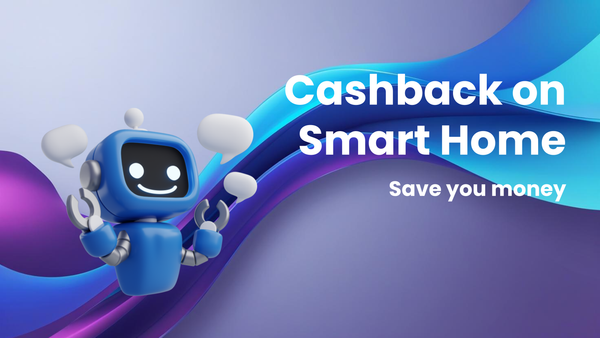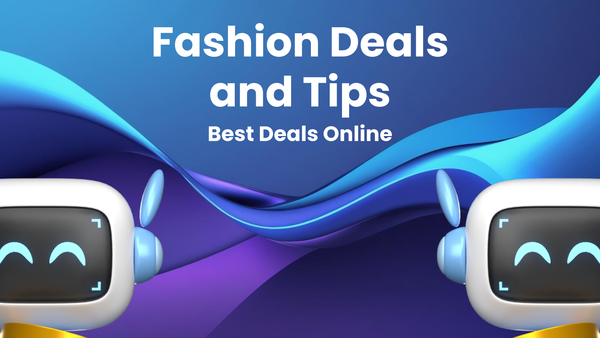Maximize Savings with Promo Codes: An Ecommerce Trends Guide

Maximize Savings with Promo Codes: An Ecommerce Trends Guide
In the dynamic world of ecommerce, where competition is fierce and customer acquisition costs are rising, businesses are constantly seeking innovative strategies to attract and retain customers. One of the most enduring and effective tactics is leveraging promo codes. While seemingly simple, promo codes have evolved into a sophisticated marketing tool with the potential to drive sales, build brand loyalty, and gather valuable customer data.
This comprehensive guide explores the multifaceted role of promo codes in modern ecommerce. We will delve into the latest trends, best practices, and strategies for maximizing savings and achieving your business goals through the strategic use of promotional offers.
I. The Enduring Power of Promo Codes in Ecommerce
Promo codes, also known as discount codes, coupon codes, or voucher codes, are alphanumeric strings that customers can enter during the checkout process to receive a discount on their purchase. Their appeal lies in the fundamental human desire for a good deal.
A. Psychological Impact:
- Loss Aversion: People are more motivated to avoid a loss than to acquire an equivalent gain. Promo codes tap into this psychology by framing the discount as an opportunity to avoid "losing" money.
- Instant Gratification: The immediate gratification of seeing the price drop at checkout provides a satisfying shopping experience.
- Perceived Value: Promo codes enhance the perceived value of the product or service, making it more attractive to potential buyers.
B. Key Benefits for Ecommerce Businesses:
- Increased Sales: Discounts incentivize purchases, driving up conversion rates and overall sales volume.
- Customer Acquisition: Promo codes can attract new customers who might be hesitant to make a purchase at full price.
- Customer Retention: Exclusive promo codes for existing customers foster loyalty and encourage repeat purchases.
- Inventory Clearance: Promo codes can be used to quickly move slow-selling or seasonal inventory.
- Data Collection: By tracking promo code usage, businesses can gain valuable insights into customer behavior, preferences, and purchase patterns.
- Marketing Campaign Support: Promo codes can be integrated into broader marketing campaigns to amplify their reach and effectiveness.
II. Current Trends in Ecommerce Promo Code Strategies
The landscape of promo codes is constantly evolving alongside broader ecommerce trends. To stay ahead of the curve, it's crucial to understand the latest strategies and best practices.
A. Personalization and Segmentation:
- Targeted Offers: Generic promo codes are becoming less effective. Customers expect personalized offers tailored to their individual preferences, purchase history, and demographics.
- Segmentation Strategies:
- Demographic Segmentation: Targeting offers based on age, gender, location, income, etc.
- Behavioral Segmentation: Targeting offers based on past purchases, browsing history, website activity, and engagement with marketing emails.
- Purchase History Segmentation: Offering exclusive discounts on products similar to previous purchases.
- Lifecycle Segmentation: Tailoring offers to different stages of the customer journey (e.g., welcome discounts for new customers, loyalty rewards for returning customers).
- Personalized Email Marketing: Delivering personalized promo codes via email based on customer data.
- Dynamic Pricing: Adjusting prices and discounts in real-time based on factors like demand, competitor pricing, and customer behavior.
B. Mobile-First Optimization:
- Mobile Shopping Dominance: With the increasing prevalence of mobile shopping, it's essential to optimize promo codes for mobile devices.
- Easy Redemption: Ensure that promo codes are easily copyable and pasteable on mobile devices.
- Mobile-Specific Offers: Creating exclusive promo codes for mobile app users or mobile website visitors.
- Push Notifications: Utilizing push notifications to deliver timely promo code alerts to mobile app users.
C. Influencer Marketing and Affiliate Programs:
- Leveraging Influencer Reach: Partnering with influencers to promote exclusive promo codes to their followers.
- Affiliate Marketing Programs: Providing affiliates with unique promo codes to track their performance and reward them based on sales generated.
- Brand Awareness and Credibility: Influencer marketing can increase brand awareness and build credibility through trusted endorsements.
D. Gamification and Interactive Offers:
- Engaging Shopping Experiences: Turning promo code redemption into a fun and interactive experience.
- Gamified Promotions: Incorporating elements like spinning wheels, scratch-off cards, or quizzes to reveal promo codes.
- Interactive Contests and Giveaways: Hosting contests or giveaways with promo codes as prizes.
- Increased Engagement and Excitement: Gamification can boost customer engagement and create a more memorable shopping experience.
E. Subscription Services and Loyalty Programs:
- Rewarding Loyalty: Offering exclusive promo codes to members of subscription services or loyalty programs.
- Recurring Discounts: Providing recurring discounts on subscription renewals or for loyal customers who reach specific spending milestones.
- Tiered Loyalty Programs: Offering increasingly valuable promo codes as customers move up tiers in a loyalty program.
- Increased Customer Lifetime Value: These strategies can incentivize customers to remain subscribed and continue making purchases.
F. AI-Powered Promo Code Optimization:
- Predictive Analytics: Using AI to analyze customer data and predict the optimal promo code strategy for each individual.
- Automated A/B Testing: Automatically testing different promo code variations to identify the most effective combinations.
- Dynamic Offer Optimization: Adjusting promo codes in real-time based on AI-powered insights.
- Improved ROI: AI can help businesses optimize their promo code strategy for maximum ROI.
III. Best Practices for Implementing Promo Code Strategies
To maximize the effectiveness of promo codes, it's essential to follow these best practices:
A. Clear and Concise Communication:
- Easy-to-Understand Terms and Conditions: Clearly communicate the terms and conditions of the promo code, including expiration dates, eligible products, and any restrictions.
- Prominent Placement: Display promo codes prominently on your website, in marketing emails, and on social media.
- Simple Redemption Process: Make it easy for customers to redeem promo codes during the checkout process.
B. Strategic Promo Code Planning:
- Define Objectives: Clearly define your goals for using promo codes (e.g., increase sales, acquire new customers, clear inventory).
- Set a Budget: Determine a budget for your promo code campaigns and track your ROI.
- Choose the Right Type of Promo Code: Select the type of promo code that best aligns with your objectives (e.g., percentage discounts, free shipping, buy-one-get-one offers).
- Set Expiration Dates: Create a sense of urgency by setting expiration dates on promo codes.
C. Data Tracking and Analysis:
- Track Promo Code Usage: Monitor how often each promo code is used and which products are being purchased with it.
- Analyze Customer Behavior: Use promo code data to understand customer preferences, purchase patterns, and demographics.
- Measure ROI: Calculate the return on investment for each promo code campaign to determine its effectiveness.
- Optimize for Future Campaigns: Use data insights to improve your promo code strategy for future campaigns.
D. Avoid Common Pitfalls:
- Over-Discounting: Excessive discounting can devalue your brand and erode profit margins.
- Confusing Terms and Conditions: Ambiguous or overly restrictive terms and conditions can frustrate customers.
- Lack of Tracking and Analysis: Failing to track promo code usage and analyze data can lead to wasted resources.
- Ignoring Mobile Optimization: Neglecting mobile optimization can alienate a significant portion of your customer base.
- Not Personalizing Offers: Generic promo codes are less effective than personalized offers tailored to individual customer preferences.
IV. Types of Promo Codes and Their Applications
Understanding the different types of promo codes available allows businesses to select the most appropriate strategy for their specific needs and goals.
A. Percentage Discounts:
- Definition: Offer a percentage off the total purchase price (e.g., 20% off).
- Applications: Effective for driving overall sales and attracting new customers.
B. Fixed Amount Discounts:
- Definition: Offer a fixed dollar amount off the total purchase price (e.g., $10 off).
- Applications: Useful for incentivizing purchases of higher-priced items or for targeting specific customer segments.
C. Free Shipping:
- Definition: Waive shipping fees for orders that meet certain criteria.
- Applications: Highly effective for reducing cart abandonment rates and encouraging larger orders.
D. Buy-One-Get-One (BOGO) Offers:
- Definition: Offer a free or discounted item when a customer purchases another item.
- Applications: Ideal for clearing inventory, promoting new products, or encouraging customers to try related items.
E. Free Gift with Purchase:
- Definition: Offer a free gift when a customer makes a purchase that meets certain criteria.
- Applications: Effective for incentivizing purchases of specific products or for building brand loyalty.
F. Loyalty Rewards:
- Definition: Offer exclusive discounts or benefits to loyal customers.
- Applications: Useful for retaining customers, encouraging repeat purchases, and building brand advocacy.
G. Referral Codes:
- Definition: Offer discounts or rewards to customers who refer new customers to your business.
- Applications: Effective for acquiring new customers through word-of-mouth marketing.
H. Category-Specific Discounts:
- Definition: Offer discounts on specific product categories.
- Applications: Useful for promoting specific product lines or for clearing inventory in certain categories.
V. The Future of Promo Codes in Ecommerce
Promo codes are likely to remain a valuable tool for ecommerce businesses in the years to come. However, their role will continue to evolve as technology advances and customer expectations change.
A. Increased Personalization:
- AI-Powered Personalization: AI will play an increasingly important role in personalizing promo codes based on individual customer data.
- Hyper-Targeted Offers: Promo codes will become even more targeted, with offers tailored to specific customer segments and purchase occasions.
B. Seamless Integration with Emerging Technologies:
- Voice Commerce: Promo codes will be seamlessly integrated into voice commerce platforms, allowing customers to redeem offers using voice commands.
- Augmented Reality (AR): AR technology will be used to create interactive shopping experiences that incorporate promo codes.
C. Focus on Sustainability and Social Responsibility:
- Eco-Friendly Discounts: Businesses will offer discounts for customers who choose sustainable shipping options or purchase eco-friendly products.
- Charitable Donations: Promo codes will be used to support charitable causes, allowing customers to donate a portion of their savings to a charity of their choice.
D. Enhanced Customer Experience:
- Simplified Redemption Process: The promo code redemption process will become even more streamlined and user-friendly.
- Gamified Experiences: Gamification will continue to be used to create engaging and enjoyable shopping experiences that incorporate promo codes.
Conclusion
Promo codes are a powerful tool for driving sales, acquiring new customers, and building brand loyalty in the competitive world of ecommerce. By understanding the latest trends, best practices, and strategies, businesses can maximize the effectiveness of their promo code campaigns and achieve their business goals. As technology continues to evolve, promo codes will become even more personalized, integrated, and customer-centric, offering exciting opportunities for businesses to connect with their customers and drive growth. Embracing these trends and adapting your promo code strategy accordingly will be crucial for staying ahead of the curve and achieving long-term success in the dynamic world of ecommerce.




